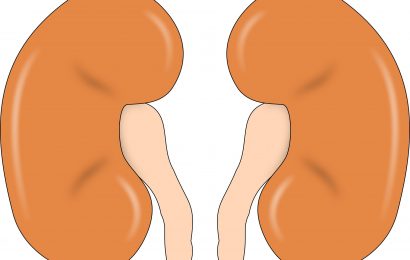In a recent study published in Nature, researchers presented a comprehensive report on the estimated impact of the severe acute respiratory syndrome coronavirus 2 (SARS-CoV-2) pandemic by estimating month-wise excess deaths for the years 2020 and 2021.

Background
COVID-19 (coronavirus disease 2019) has caused considerable morbidity and mortality worldwide. There are wide variations in the excess death estimates across the six WHO (World Health Organization) regions. Global estimates of COVID-19-associated deaths could underscore improved reporting needs wherever gaps exist.
About the study
In the present study, researchers estimated national, regional, and international excess COVID-19-associated deaths between January 1, 2020, and December 31, 2021, by month.
The excess COVID-19-associated mortality was calculated as the difference between the all-cause mortality (ACM) during COVID-19, and that which was expected had the pandemic not occurred. In February 2021, the WHO collaborated with the United Nations social affairs and economic department to form the TAG (technical advisory group) to assess COVID-19-related deaths. In August of the same year, letters were sent to WHO members for nominating focus points to participate in nation-level consultations.
Member nations were asked to give feedback points on the COVID-19-related excess death estimates and provide data that might have been unavailable to WHO in previous times. Feedback obtained from the nations was incorporated into the models for updating the excess death estimates. The initial rounds of consultations were conducted from October to November 2021 via WHO’s online Country Portal platform. Nations without nominated focus points were approached via their corresponding WHO country offices or headquarters in Switzerland.
Information sessions, technical consultations, and regional webinars were held with members from October 2021 to February 2022 to discuss estimates, methods, and data inputs. By March 2022, 140 out of 194 WHO member nations participated in the consultations; 76 provided feedback, and 65 provided information. In March 2022, the revised death estimates for 2020 and 2021 were distributed to the nation-level focus points. The documented national all-cause mortality (ACM) data by week and month were available for some nations.
Data sources for the study included: (i) Data shared routinely with WHO under the agreement and specifically submitted to WHO for the estimation project; (ii) data documented by European nations to Eurostat; (iii) the human mortality database, and (iv) the world mortality dataset. In addition, annual information for the years 2020 and 2021 was retrieved from the national statistics offices of Grenada, Saint Kitts and Nevis, China, Saint Vincent and the Grenadines, Vietnam, and Sri Lanka. The team utilized the WHO GHE (global health estimates) database for countries without ACM information for pre-pandemic years. Estimator variables comprised variables that varied and did not vary by time.
Time-dependent variables included temperatures, test positivity rates, confirmed SARS-CoV-2 infection-related death rates among every 100,000 individuals, SARS-CoV-2-positive testing rates among every 100,000 individuals, and one variable based on containment measures. The time-independent variables were the income level, the historical prevalence of diabetes, and cardiovascular disease-associated death rates based on the GBD (global burden of disease) project estimates. P-scores were calculated as ratios of excess COVID-19-associated deaths to expected COVID-19-associated deaths.
Using spline models, national-level ACM data were used to generate the expected COVID-19-related death estimates. For nations with subnational ACM data only, national ACM values were derived by multinomial modeling and Poisson covariate modeling. Log-linear regression modeling on the variables within the Bayesian Poisson framework was utilized to estimate deaths in regions with inadequate COVID-19 deaths documentation.
Results
The team estimated 15 million excess COVID-19-associated deaths globally, three times higher than the five million deaths documented between 2020 and 2021. The global excess deaths estimated in 2020 and 2021 were 4.5 and 10.4, respectively, with increases of 8.0% and 18% in global deaths, during the corresponding years, compared to deaths expected if the pandemic did not occur.
Across the globe, between January 2020 and December 2021, there were 5,420,534 documented COVID-19-related deaths, and based on the estimates, the ratio of excess to reported COVID-19 deaths was 2.7, showing a large discrepancy. The greatest cumulative COVID-19-related excess deaths were estimated for India (five million deaths).
The ratio of excess deaths to documented COVID-19 deaths was greatest in the SEAR and AFR regions. The regions affected the most by COVID-19 were AMR (22%), SEAR (22%), EUR (17%), and EMR (12%). Over 50% of the estimated death excess occurred in lower-middle-income nations, including sub-Saharan Africa. The death peaked in SEAR during mid-2021 (with double the estimated death that expected deaths), in AMR during January 2021, and in EUR during end-2020, followed by a drop and subsequent steady increase in 2021.
The nations with the greatest excess death estimates, accounting for >80% of the global excess death estimates between 2020 and 2021, were Brazil, Bangladesh, India, Egypt, Colombia, Iran, Indonesia, Mexico, Italy, Pakistan, Nigeria, Peru, Poland, South Africa, Ukraine, Turkey, the Philippines, the UK (United Kingdom), the USA (United States of America), and the Russian Federation. The most impacted nations were the ones with lower populations.
P-scores were 97% for Peru, indicating a doubling of COVID-19 deaths relative to expected deaths. Ecuador and Bolivia showed 51% and 49% increased deaths, respectively. The ratio of excess deaths to reported COVID-19 deaths showed high values for AFRO region nations. West European nations showed ratios close to 1.0, with a few nations, e.g., France having ratios below one.
Overall, the study findings provided estimates of COVID-19-related excess deaths across the globe.
- Msemburi, W., Karlinsky, A., Knutson, V. et al. (2022). The WHO estimates of excess mortality associated with the COVID-19 pandemic. Nature. doi: https://doi.org/10.1038/s41586-022-05522-2 https://www.nature.com/articles/s41586-022-05522-2
Posted in: Medical Science News | Medical Research News | Disease/Infection News
Tags: Cardiovascular Disease, Coronavirus, Coronavirus Disease COVID-19, covid-19, Diabetes, Global Health, Mortality, Pandemic, Respiratory, SARS, SARS-CoV-2, Severe Acute Respiratory, Severe Acute Respiratory Syndrome, Syndrome

Written by
Pooja Toshniwal Paharia
Dr. based clinical-radiological diagnosis and management of oral lesions and conditions and associated maxillofacial disorders.
Source: Read Full Article


